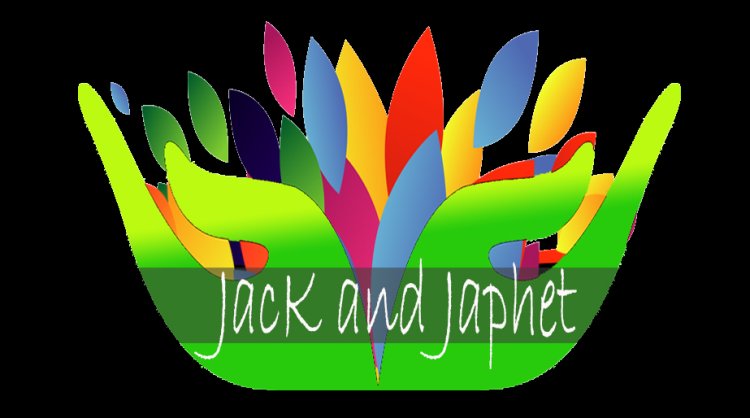Kids are behind after two years of pandemic learning loss. Why is Ontario spending millions on private tutoring — not schools — to fix?
Silky Singh, who runs a private tutoring centre in Brampton, used to get just two to three calls a day during her busy season, which typically came after first report cards went home.But just two weeks into the school year, the Peel public board added Kumon to its list of centres providing tutoring for its students and her phone started ringing off the hook with about 15 calls a day.“This year, it’s an SOS situation,” said Singh, who opened Kumon Math and Reading Centre of Brampton-Heart Lake 17 years ago.In September, Singh was “overwhelmed” enrolling Peel students and hired additional staff to meet demand. By month’s end, she had exceeded the amount the board would pay her for services, forcing her to scale back sessions. Since then, she’s turned away about 75 families, but still takes clients who pay out of pocket.Private tutoring is booming, and centres have been busy fielding phone calls since the start of the school year as kids struggle to catch up in a system pummelled by the pandemic. The province is helping fuel this demand because it gave school boards $175 million to expand tutoring supports focused on literacy and numeracy and some of that money is going to private businesses. Plus, it’s giving $365 million in catch-up payments to parents — $200 or $250 per child — to pay for tutoring, supplies or equipment that enhance learning.While the Ministry of Education says it is making the largest ever investment in public education — this year funding to boards hit $26.6 billion, $683 million more than last year — some have raised concerns that public dollars are being diverted from the classroom and that private tutoring, particularly, will exacerbate inequities amongst students.Boards have taken different approaches with their tutoring programs, which are offered in-school, online and through partnerships with community groups and companies.In Peel, the board has relied heavily on partnerships with private centres, including Kumon, Sylvan Learning and Oxford Learning.At Singh’s Kumon centre, she’s even seeing kids who don’t need catching up taking advantage of the private tutoring paid for by the board. Rather than make it available to all students, from Kindergarten to Grade 12, she thinks the board should have made it “needs-based,” requiring a referral from a teacher.“I have brilliant kids joining and I know they don’t need (tutoring), but what could I say?” asks Singh. She’s had four-year-olds sign up and wonders, “What learning gaps does a child that age have?”Brampton mother Bibi Sultan is grateful, though. At the start of the school year, she was prepared to cover private tutoring costs for her daughters Aamiya, 7, and Ariella, 10, because they struggled with reading. It would have required the Brampton mother to dip into savings, work overtime or cut expenses. But she would have done it because she doesn’t want her girls slipping further behind. During the height of pandemic restrictions she and her husband were so busy working they didn’t have time to help them with remote learning.In mid-September, Sultan learned of the tutoring services offered by the Peel District School Board and called centres on the board’s list of providers. The first few she tried were fully booked. She got lucky with Kumon. For Sultan, it’s “a big deal” she doesn’t have to pay the $600 a month in tutoring fees for both girls, which covers two hour-long sessions per week.So far, her girls are “enjoying” tutoring, adding they seem “motivated,” and even “excited to read” because she’ll now see them at home immersed in a book, or doing homework.“They’ve improved a little,” she says, adding they sound out words with greater ease. “I’m hoping they get to where they should be ... and get caught up.”In February, the province announced $175 million for boards to expand access to small-group tutoring — about five kids — delivered during and outside of schools hours, with a focus on students more severely impacted by pandemic learning disruptions. While it was up to each board to design and implement its own tutoring supports, based on the needs of its students, they were directed by the ministry to focus on in-person school-based programs. They could also collaborate with community organizations and for-profit companies to provide learning environments where kids are more comfortable because of their language, culture or community norms. To meet the demand, boards asked for flexibility to contract companies, because they had a tight timeline to get programs running by April and are grappling with a staffing shortage. The tutoring programs will run until the end of March.Cathy Abraham, president of the Ontario Public School Boards’ Association, says it would have been preferable to keep the full $175 million — and the additional $365 million used for individual child payouts — in the public school system, where “we can make it go further” because the students are already there, and staff have relationships with them, know whe


Silky Singh, who runs a private tutoring centre in Brampton, used to get just two to three calls a day during her busy season, which typically came after first report cards went home.
But just two weeks into the school year, the Peel public board added Kumon to its list of centres providing tutoring for its students and her phone started ringing off the hook with about 15 calls a day.
“This year, it’s an SOS situation,” said Singh, who opened Kumon Math and Reading Centre of Brampton-Heart Lake 17 years ago.
In September, Singh was “overwhelmed” enrolling Peel students and hired additional staff to meet demand. By month’s end, she had exceeded the amount the board would pay her for services, forcing her to scale back sessions. Since then, she’s turned away about 75 families, but still takes clients who pay out of pocket.
Private tutoring is booming, and centres have been busy fielding phone calls since the start of the school year as kids struggle to catch up in a system pummelled by the pandemic. The province is helping fuel this demand because it gave school boards $175 million to expand tutoring supports focused on literacy and numeracy and some of that money is going to private businesses. Plus, it’s giving $365 million in catch-up payments to parents — $200 or $250 per child — to pay for tutoring, supplies or equipment that enhance learning.
While the Ministry of Education says it is making the largest ever investment in public education — this year funding to boards hit $26.6 billion, $683 million more than last year — some have raised concerns that public dollars are being diverted from the classroom and that private tutoring, particularly, will exacerbate inequities amongst students.
Boards have taken different approaches with their tutoring programs, which are offered in-school, online and through partnerships with community groups and companies.
In Peel, the board has relied heavily on partnerships with private centres, including Kumon, Sylvan Learning and Oxford Learning.
At Singh’s Kumon centre, she’s even seeing kids who don’t need catching up taking advantage of the private tutoring paid for by the board. Rather than make it available to all students, from Kindergarten to Grade 12, she thinks the board should have made it “needs-based,” requiring a referral from a teacher.
“I have brilliant kids joining and I know they don’t need (tutoring), but what could I say?” asks Singh. She’s had four-year-olds sign up and wonders, “What learning gaps does a child that age have?”
Brampton mother Bibi Sultan is grateful, though. At the start of the school year, she was prepared to cover private tutoring costs for her daughters Aamiya, 7, and Ariella, 10, because they struggled with reading. It would have required the Brampton mother to dip into savings, work overtime or cut expenses. But she would have done it because she doesn’t want her girls slipping further behind. During the height of pandemic restrictions she and her husband were so busy working they didn’t have time to help them with remote learning.
In mid-September, Sultan learned of the tutoring services offered by the Peel District School Board and called centres on the board’s list of providers. The first few she tried were fully booked. She got lucky with Kumon. For Sultan, it’s “a big deal” she doesn’t have to pay the $600 a month in tutoring fees for both girls, which covers two hour-long sessions per week.
So far, her girls are “enjoying” tutoring, adding they seem “motivated,” and even “excited to read” because she’ll now see them at home immersed in a book, or doing homework.
“They’ve improved a little,” she says, adding they sound out words with greater ease. “I’m hoping they get to where they should be ... and get caught up.”
In February, the province announced $175 million for boards to expand access to small-group tutoring — about five kids — delivered during and outside of schools hours, with a focus on students more severely impacted by pandemic learning disruptions. While it was up to each board to design and implement its own tutoring supports, based on the needs of its students, they were directed by the ministry to focus on in-person school-based programs. They could also collaborate with community organizations and for-profit companies to provide learning environments where kids are more comfortable because of their language, culture or community norms. To meet the demand, boards asked for flexibility to contract companies, because they had a tight timeline to get programs running by April and are grappling with a staffing shortage. The tutoring programs will run until the end of March.
Cathy Abraham, president of the Ontario Public School Boards’ Association, says it would have been preferable to keep the full $175 million — and the additional $365 million used for individual child payouts — in the public school system, where “we can make it go further” because the students are already there, and staff have relationships with them, know where they are academically and what needs to be done to help.
“That’s a lot of money that could’ve gone into publicly funded schools.... It just wasn’t possible, given the restraints. In a perfect world, we would rather that this didn’t happen.”
But she says boards requested flexibility because they worried they might lose the funding or not be able to provide tutoring to those who wanted it. “What do you do? Do you say, ‘No, we’re not going to help these kids because this isn’t the preferable way of doing it?’ You want to err on the side of students.... The bottom line is always about helping the kids.”
At the Peel board, demand has been so high its list of external tutoring service vendors has grown to about 55, with some no longer taking new students. Of the $6.5 million the board received for tutoring — to use between September and March — about $3.9 million is allocated for private companies providing tutoring services. The remaining $2.6 million is for its virtual tutoring call centre staffed by board employees, and school-based tutoring that includes one-to-one and small group support. The board also has $2.5 million in unused funds from the spring and summer that it’s giving directly to schools to support local needs.
Given pandemic-related challenges in schools it’s taken time to develop programming there, says the board. And it has been reaching out to community groups to provide tailored tutoring in individual schools to marginalized students or those with greater socio-economic needs.
The board says using tutoring companies ensures regional coverage for Mississauga, Brampton and Caledon students and that a referral process would’ve been a barrier. Students aren’t limited in how much tutoring they can access, but the board caps the amount it pays each centre, based on its location and size. The board has heard from 20 families who couldn’t access tutoring and is looking into how many places are turning away kids because they’ve already used up their funds.
Elsewhere in the GTA, school boards have taken different approaches when it comes to partnering with private companies. For instance, neither Durham nor York’s public boards have contracted any. Meanwhile, Durham’s Catholic board has 27 companies providing $500 in tutoring, about 10 one-hour sessions, to its most vulnerable students — each school was allocated tutoring spaces based on enrolment, and whether it’s in a priority neighbourhood.
The Toronto District School Board received $10 million for tutoring between September and December — and can use about $4 million in unspent funds from the spring and summer to cover costs until March. It has earmarked the money, in roughly equal portions, with one-third for tutoring offered by staff in schools, one-third for community groups and one-third for four companies providing virtual support. Two will provide round-the-clock help to all TDSB students, and two will offer intensive support to kids at about 100 priority schools.
Diana Panagiotopoulos, who’s overseeing TDSB tutoring programs, doesn’t have a preference when it comes to a delivery model, saying, “The favourite is whatever works for the child.”
“The relationships that kids have with their tutor ... that’s the key,” says the system superintendent of virtual learning and re-engagement.
She says it was important the TDSB partner with local groups that have strong ties with students, noting, “We want to service kids in their neighbourhoods.”
One of those places is Portage Trail Community School, in the city’s west end where the Toronto Foundation for Student Success runs beyond 3:30, a free after-school program for Grades 3 to 8 available in 18 schools located in priority neighbourhoods. At beyond 3:30, kids get small-group tutoring twice a week — plus, homework support every day — and the co-ordinator at each site connects with school staff to determine where kids are lagging.
Andre Smart, 11, in Grade 6, says he signed up for tutoring to “get better grades and be more confident when I’m in class.”
So did Kismat Martins, 12, who pre-pandemic would raise her hand often to participate, but says periods of remote learning hurt her grades.
“I got easily distracted,” says the Grade 7 student. “I’d go to YouTube, go on Netflix.”
She’s now working towards the goal of getting grades that are “just A’s and B’s, no C’s,” and says it’s great having tutors who are younger than her teachers and with whom she can relate, noting “I talk to them. I can make jokes with them. They’re on TikTok.”
Sandra Pierre, beyond 3:30 program director, says the foundation wants to secure funding to run the tutoring program until June, noting, “Kids were already behind before the pandemic and COVID exacerbated it — some are now two years behind their peers.”
Pierre says most parents in the communities they serve can’t afford private tutoring. And even though the province is giving the no-strings attached payments, she asks, “How do you as a parent in a low-income community determine whether to use the $200 or $250 for food or private tutoring?”
“That (amount) will give you three to four (tutoring) sessions, maximum,” says Pierre. “It is not sufficient to address the need.”
It’s a comment echoed by owners of tutoring centres. Vanessa Vakharia, founder and CEO of The Math Guru, where tutoring costs $80 an hour, calls the government payments “ridiculous” and says they won’t cover enough sessions to make a difference in a student’s academics.
“It should not be up to individual parents to outsource their kids’ education, which is a publicly funded service,” says Vakharia, whose studio is located on Yonge Street, near Eglinton Avenue. “I think that announcement put parents more on edge, like ‘Oh my gosh, we’re supposed to be outsourcing education?’ ... What parent has the bandwidth for that?”
Finding the right tutor takes time and resources, and there are plenty to choose from, she notes, adding “Tutoring isn’t a regulated industry. Anyone can call themselves a tutor.”
Although private tutoring may not be a viable option for everyone, for those who are able to participate, there can be clear benefits. This is the second year that Mei-Lin Ang, 16, is going to The Math Guru. The Grade 11 student who attends Bloor Collegiate Institute’s TOPS program — an enriched science and math program — relishes her weekly one-hour tutoring sessions, saying they “empower me in my schooling” and help make sense of a week’s worth of classes.
“It’s amazing. I look forward to Wednesdays, so I can go and understand what’s going on in math,” says Ang. “(My tutor) teaches me new ways to do things and helps me to understand it better, instead of just helping me finish my homework.”
Kelly Gallagher-Mackay, a Wilfrid Laurier University associate professor who focuses on issues of educational inequality and co-authored a report on tutoring during COVID, believes private tutoring can help. But she says it’s tough to gauge its effectiveness, noting large international studies have tried to do this and “results are ambiguous” because it’s difficult to figure out the causal impact of tutoring since those kids typically come from socially advantaged backgrounds.
There’s certainly no shortage of providers to choose from. According to the report, in the early 2000s, there were nearly 400 tutoring providers in Ontario, while a YellowPages search in October 2021 revealed 1,468 organizations offering some type of tutoring service in Toronto alone. (A recent search yielded 1,525 results in the city.)
She says research shows tutoring can have “incredibly strong results” if done in high doses — at least three times a week — by trained individuals who work with teachers to determine the student’s needs.
Gallagher-Mackay says boards had little time to implement tutoring programs and little guidance from the province, calling it “a crowd-pleasing pandemic learning recovery strategy” that is “reactive and unlikely to be effective.” She’s concerned the government is missing out on an opportunity by not following best practices, such as requiring in-school high-dose tutoring.
“The worry is that they are, primarily, giving money to something that sounds good, with little guidance, and hoping that boards are good stewards of that money.... It’s not building for the future or a stronger education system.”
Karen Brown, president of the Elementary Teachers’ Federation of Ontario, worries the province is creating “a pathway towards privatization” by diverting public funds she says are better spent lowering class sizes and increasing in-school supports.
“All students are able to benefit if you create conditions within the classroom on an ongoing basis,” says Brown of ETFO, which represents about 83,000 members.
When announcing details of the catch-up payments at a news conference in late October, Education Minister Stephen Lecce spoke of the “historic investment” to tackle learning loss, which includes more than $600 million “to give kids all the supports they need to get back on track.”
He noted the investment in publicly funded tutoring has so far benefited 170,000 students, more than 22,000 of them with special education needs. The province also provided $1.4 million to expand the free online tutoring services Mathify and Eurêka, which support Ontario students in English and French.
The $200-$250 direct payments to parents, he said, “will help families offset the rising costs of living so that moms and dads can best support their kids.” (As of Thursday, the province had received more than 1.2 million applications.)
In Toronto’s west end, Carlos Patricio, who owns two Mathnasium franchises, hasn’t seen an uptick in business since the province announced the one-time payments. Nor does he expect to.
“That doesn’t even cover half a month of tutoring,” says Patricio, noting hour-long math tutoring sessions vary between $40 to $100. “It would’ve been better if (the government) put that money towards schools and teachers.... It makes no sense.”
Still, business is booming.
“I’ve never been this busy,” said Patricio. He opened his business nine years ago and says October was his busiest month in sales ever. November has surpassed it, he says, noting “We’re still at the beginning of the month.”
For now, he’s got enough staff to handle the surge. Pre-pandemic many students were about a year behind in math, but now some are lagging up to three years.
Some kids can catch up quickly if they do the work, he says, while others may need an entire year of twice-weekly tutoring sessions to reach grade level.
“It’s a long process ... a serious investment.”
Isabel Teotonio is a Toronto-based reporter covering education for the Star. Follow her on Twitter: @Izzy74




















